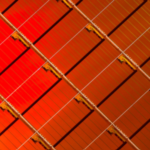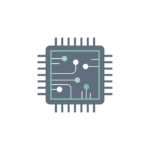The last several years have seen a rise in the difficulty of PCB design, which is typically brought on by the simultaneous existence of digital, mixed, and radio frequency (RF) signals. In general, a printed circuit board can be categorised as RF if the involved signals have a frequency greater than at least 100 MHz. An RF PCB’s layout and routing call for certain unique considerations and a different strategy than a low frequency PCB. In order to prevent potential signal reflections, it is necessary to think of the entire circuit as a distributed parameter system and take into account both the amplitude and the phase shift that the signal experiences along the transmission line. With increasing frequency, the wavelength of the RF signal becomes comparable to the geometric dimensions of the traces. The main difficulties that electrical designers must deal with include phenomena like the skin effect, capacitive coupling between signals that pass along nearby traces, electromagnetic interference, and impedance management.
Main guidelines
The impedance matching during RF signal routing is the first factor to consider. In actuality, a circuit lacking impedance matching produces dangerous signal reflections along the PCB lines in addition to large power losses. According to the maximum power transfer theorem, the maximum amount of power is transferred when the source’s internal resistance is equal to the load resistance. Therefore, it is crucial to take into account the impedance matching in order to maximise power transfer. It is recommended for the traces of an RF PCB to have a characteristic impedance of 50 ohm given that the majority of systems and RF modules have an impedance of 50 ohm. Figure 1 displays two different sorts of traces: The calculations in the IPC2141A standard can be used to determine the width W as a function of the thickness T and the separation H between the trace and the ground plane once the impedance Z has been set at 50 ohm.

As a general guideline, we can state that a trace’s width becomes significant if its length exceeds one tenth of the wavelength of the signal it is carrying. The critical length of the trace, for instance, is equivalent to around 3 cm when the frequency f = 1 GHz corresponds to a wavelength of λ = c / f = 30 cm (where c is the speed of light in a vacuum). The signal transmission speed, however, is diminished with the square of the relative dielectric constant of the material, which in the case of FR-4 is roughly 4.3, and is consequently slower than the speed of light on the PCB. When a direction change is required for routing purposes, it is recommended to utilise a radius of curvature that is at least three times the width of the trace, as seen in the image on the left of Figure 2. Routing should use a rounded right angle, as shown in the image to the right of Figure 2, if placing a curved trace is not practicable.

It is required to insert through holes when a transmission line must span multiple levels due to layout requirements in order to reduce the load inductance. At least two holes must be used for each transition. The proper size selection of SMD components is also crucial, as there are many different formats available on the market. In order to avoid impedance mismatch difficulties between the trace and component pads, it is usual practise to choose passive SMD components (resistors and capacitors) whose width is comparable to that of a trace with an impedance of 50. Components and traces are located on the upper layer of double-sided PCBs, while the lower layer serves as the ground plane and offers the shortest path for ground return currents. Given the limited available space, a double-sided PCB is a very cost-effective solution, but it necessitates extremely precise routing and component arrangement. A double-sided PCB typically has a thickness of 0.8 to 1 mm since bigger thicknesses would result in too wide traces (based on what was previously said about impedance). A 4-layer PCB makes routing much easier because there is more room for components and you can design both ground and power planes on it. In Figure 3, the suggested stack-up is displayed. Keep in mind that the ground plane in this construction must always be present beneath the top layer, which houses the components and the traces.

We must ensure that RF signals are correctly segregated in order to prevent undesirable coupling with other signals, taking the layout of Figure 3 into consideration. This primarily impacts power lines, high frequency signals (like clock or PLL signals), and radio frequency transmission lines (like the Rx and Tx lines of a wireless transceiver). The capacitance of these capacitors must be chosen in accordance with the frequency of the RF signals that travel across the circuit. The standard procedure is to employ a solid (uninterrupted) ground plane that is positioned just underneath the layer above where components and transmission lines are located, as shown in Figure 3. A ground plane nearby that can carry the return current is necessary for RF transmissions since they have very sharp rising edges. If you don’t do this, current loops with undesirable signal radiation can be made, which can distort the RF signal. In order to achieve a precise impedance value while limiting signal reflections, microstrip traces are utilised, whose width and distance from the ground plane may be regulated. A solid ground plane also enables, through specific through holes, a simple connection of the pads to ground. Additionally, it is crucial to locate these via holes near the borders of the PCB to minimise RF losses through the lamination of the PCB. The ground plane also serves a crucial secondary purpose by offering a reliable method for heat dissipation. In order to optimise thermal management, it is also important in this situation to insert the proper amount of via holes, potentially through holes vias to traverse all of the PCB’s layers.







